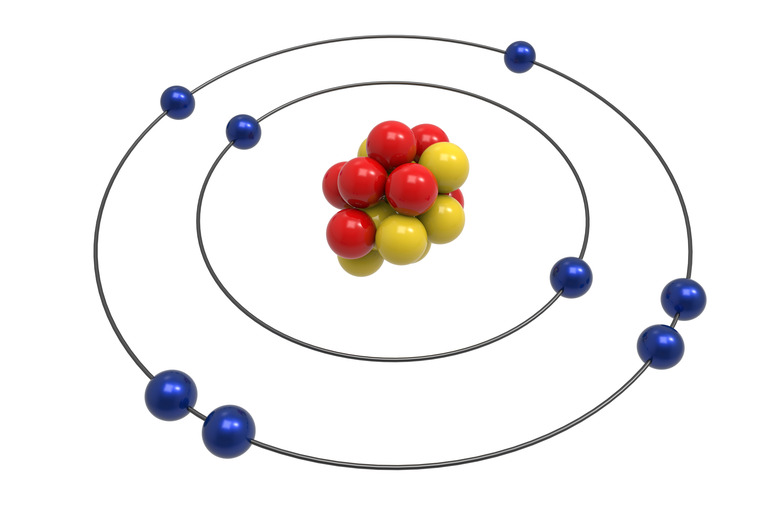How To Determine The Highest Ionization Energy
When it comes to chemistry, it's hard to imagine a more familiar image than a tightly packed nucleus of protons and neutrons surrounded by electrons in their orbitals. If you need to compare ionization energies for different elements, this understanding of the structure of an atom is a great starting point.
TL;DR (Too Long; Didn't Read)
The amount of energy necessary to lose one electron from a mole of gas phase atoms is called an element's ionization energy. When looking at a periodic table, ionization energy generally decreases from the top to the bottom of the chart and increases from the left to the right of the chart.
What Is Ionization Energy?
What Is Ionization Energy?
For any atom, ionization energy (sometimes called ionization potential) is the amount of energy needed to drop one electron from a mole of gas phase atoms. The removal of one electron from a neutral atom leaves you with a positively charged ion of the element, called a cation, plus the lost electron.
Many elements can lose more than one electron, so the formation of a 1+ cation is actually first ionization energy while subsequent electron losses form a 2+ cation or a 3+ cation (or more) and are second ionization energy and third ionization energy, respectively.
First ionization energy removes the loosest electron from the neutral atom, and the number of protons exerting an attractive force on the remaining electrons does not change. This means that removing a second electron will be more difficult and require more energy. Therefore, second ionization energy will always be larger value than first ionization energy. Scientists express ionization energy in joules or electron volts.
Ionization Energy and the Periodic Table
Ionization Energy and the Periodic Table
It is possible to look at the periodic table and notice ionization energy trends. Generally, ionization energy always decreases as you move from the top of the chart to the bottom of the chart and increases as you move from the left side of the chart to the right side of the chart. This means that the element helium (He), which is the topmost element on the far right side of the periodic table, has a much higher ionization energy than does the element francium (Fr), which sits at the bottom of the first column on the left side of the periodic table.
The reasons behind these trends are straightforward. The elements near the bottom of the periodic table have a greater number of orbitals. This means that the outermost electrons are further away from the nucleus and therefore easier to lose, resulting in a lower ionization energy. The electrons of the elements on the left side of the periodic table are also a bit easier to lose since those elements have fewer protons. For example, hydrogen (H) on the far left side of the periodic table contains only one proton while helium (He) on the far right side of the periodic table contains two protons. This second proton increases the attractive force holding onto helium's electrons, so the ionization energy is higher.
Comparing Ionization Energies
Comparing Ionization Energies
Understanding ionization energy is important because it reflects an element's ability to participate in some chemical reactions or form some compounds. If you must determine which element from a list has the highest ionization energy, find the elements' placements on the periodic table. Remember that elements near the top of the periodic table and further to the right of the periodic table have higher ionization energies. You can easily find periodic tables that list the individual ionization energies for each element to assist you in this task.
Cite This Article
MLA
Mayer, Melissa. "How To Determine The Highest Ionization Energy" sciencing.com, https://www.sciencing.com/determine-highest-ionization-energy-8583085/. 5 June 2018.
APA
Mayer, Melissa. (2018, June 5). How To Determine The Highest Ionization Energy. sciencing.com. Retrieved from https://www.sciencing.com/determine-highest-ionization-energy-8583085/
Chicago
Mayer, Melissa. How To Determine The Highest Ionization Energy last modified March 24, 2022. https://www.sciencing.com/determine-highest-ionization-energy-8583085/
